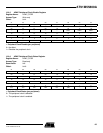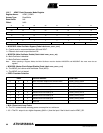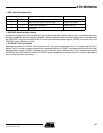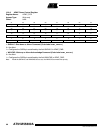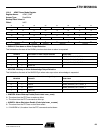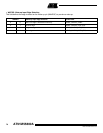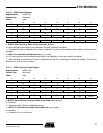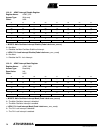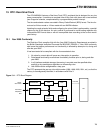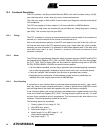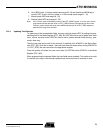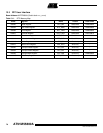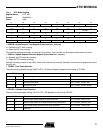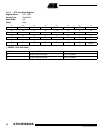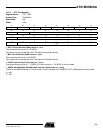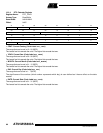
73
1745D–ATARM–04-Nov-05
AT91M55800A
13. RTC: Real-time Clock
The AT91M55800A features a Real-time Clock (RTC) peripheral that is designed for very low
power consumption. It combines a complete time-of-day clock with alarm and a two-hundred
year Gregorian calendar, complemented by a programmable periodic interrupt.
The time and calendar values are coded in Binary-Coded Decimal (BCD) format. The time for-
mat can be 24-hour mode or 12-hour mode with an AM/PM indicator.
Updating time and calendar fields and configuring the alarm fields is performed by a parallel
capture on the 32-bit data bus. An entry control is performed to avoid loading registers with
incompatible BCD format data or with an incompatible date according to the current month/
year/century.
13.1 Year 2000 Conformity
The Real-time Clock complies fully with the Year 2000 Conformity Requirements as stated in
the British Standards Institution Document Ref BSI-DISC PD2000-1: “Year 2000 conformity
shall mean that neither performance nor functionality is affected by dates prior to, during and
after the year 2000”.
It has been tested to be compliant with the four associated rules:
1. No value for current date will cause any interruption in operation.
2. Date-based functionality must behave consistently for dates prior to, during and after
year 2000.
3. In all interfaces and data storage, the century in any date must be specified either
explicitly or by unambiguous algorithms or inferencing rules.
4. Year 2000 must be recognized as a leap year.
The RTC represents the year as a four-digit number (1998, 1999, 2000, 2001, etc.) so that the
century is unambiguously identified, in accordance with Rule 3.
Figure 13-1. RTC Block Diagram
Bus Interface
32768 Divider
Time
SLCK:
Slow Clock
Advanced
Peripheral
Bus
AIC
Date
RTCIRQ
Entry
Control
Interrupt
Control



